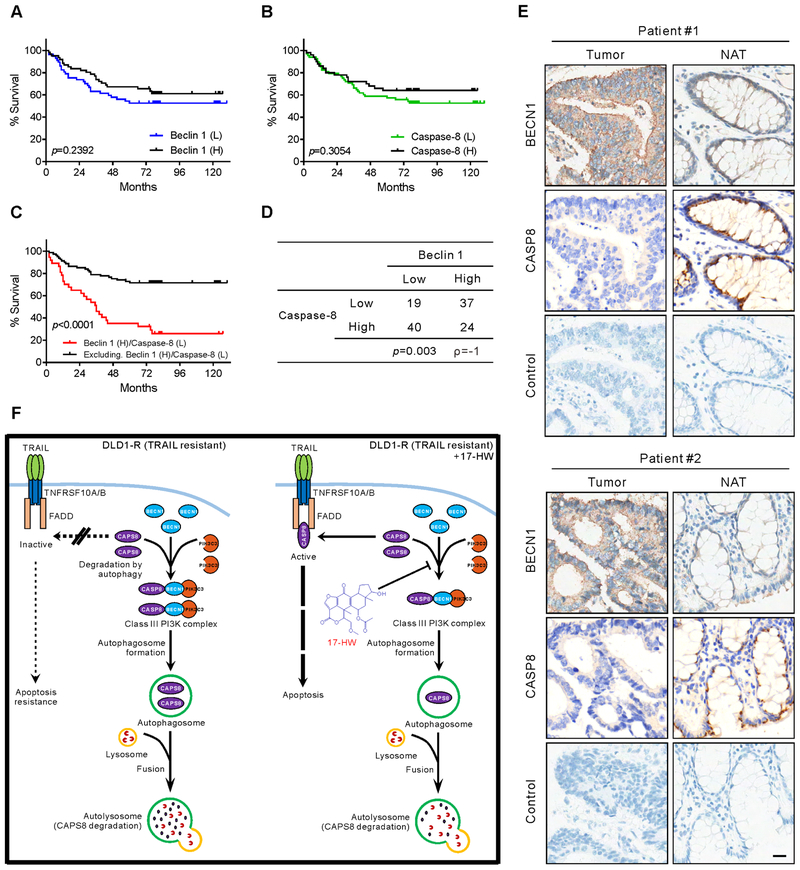Figure 6.
Correlation of poor survival rate with high BECN1 level plus low CASP8 level in colon cancer patient samples
(A) The Kaplan-Meier survival curve is showing the difference between colon cancer patients with high BECN1 expression (61 out of 120, black) and low BECN1 expression (59 out of 120, blue). (B) The Kaplan-Meier survival curve is showing the difference between colon cancer patients with high CASP8 expression (51 out of 120, black) and low CASP8 expression (69 out of 120, green). (C) The Kaplan-Meier survival curve is showing the difference between colon cancer patients with high BECN1 plus low CASP8 (37 out of 120, red) and other patients (83 out of 120, black). (D) A chi-squared test is showing the correlation of BECN1 expression and CASP8 expression in 120 colon cancer patients. (E) Immunohistochemistry staining for BECN1 and CASP8 in two representative colon cancer biopsies (Tumor) and matched normal adjacent colon tissues (NAT) (scale bar, 20 μM). The significance of the Kaplan-Meier survival rate was analyzed by log-rank (Mantel-Cox) test, and the p values were inserted in graphs. (F) Graphical illustration of resensitization of TRAIL response by 17-HW. In sensitive cells (DLD1), TRAIL activates caspase-8, triggering the extrinsic apoptotic cascade and cell death. In TRAIL-resistant cells (DLD1-R), overexpressed BECN1 causes inclusion of caspase-8 into class III PI3K complexes that sequester caspase-8 into autophagosomes for degradation in autolysosomes. 17-HW blocks the formation of the Class III PI3K complex that reduces the degradation of caspase-8, resulting in the restoration of TRAIL’s response in the drug-resistant DLD1-R cells.

